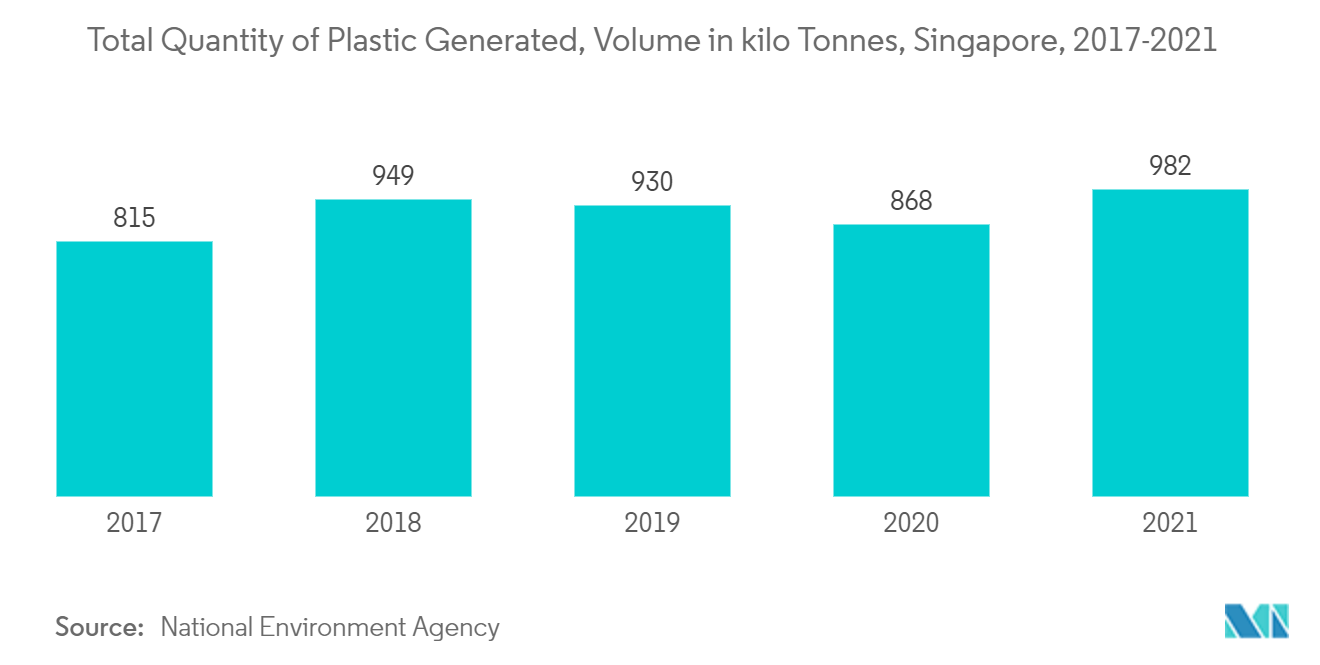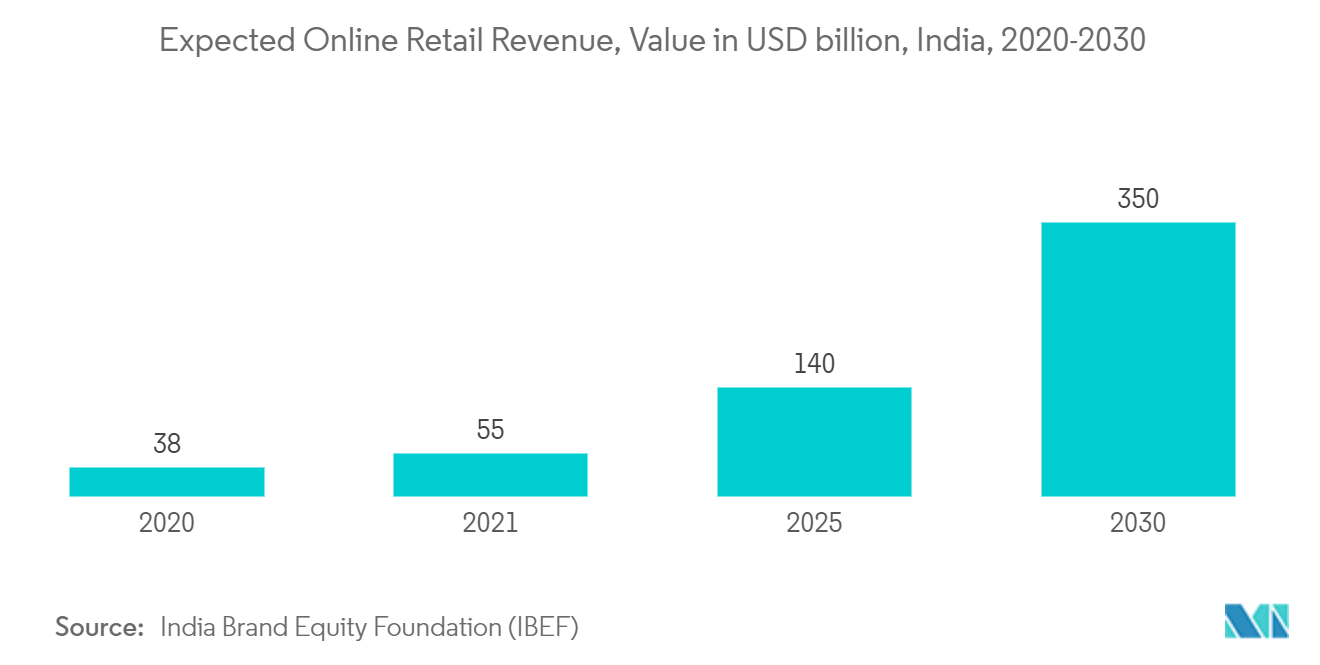Market Trends of Asia-Pacific Food Packaging Industry
This section covers the major market trends shaping the APAC Food Packaging Market according to our research experts:
Flexible Packaging is Expected to Drive the Market Growth.
- According to IBEF, the Indian food and grocery market is the world's sixth-largest, with retail contributing 70% of the sales. The Indian food processing industry accounted for 32% of the country's total food market, one of the largest industries in India, ranked fifth in terms of production, consumption, export, and expected growth.
- Flexible packaging industry growth in India is primarily driven by the food and pharmaceutical packaging sectors. The enormous and increasing Indian middle class, as well as the country's growing organized retail sector, are driving flexible packaging industry growth. The increasing expansion of exports, which necessitates superior packaging standards for the worldwide market, is another reason that has boosted the packaging business significantly. Flexible plastic packaging reigns supreme in India's packaging business.
- In recent years, typical rigid packaging customers have been seen shifting to flexible packaging. The key reason for this, according to industry sources, is that flexible packaging is aesthetically pleasing, cost-effective, and durable. One of the primary factors contributing to the expansion of flexible packaging in India is consumer preference for convenient packaging and packaged items in reasonable quantities in laminates.
- According to the Flexible Packaging Association, flexible packaging is mostly used for food, accounting for more than 60% of the overall market. Because it was able to incorporate new solutions for the many packaging issues it faced, the flexible packaging industry is experiencing robust growth.
- Beyond convenience, other factors impacting the flexible packaging choice for meat, poultry, and seafood in the food business include sustainability, transparency, food safety, and food waste reduction. Companies are becoming more interested in recyclable and recycled-content flexible packaging solutions due to a number of causes. For this, options such as formable paper, which has great barrier qualities, is suited for lunchmeat and portion packs, and uses up to 80% less plastic, are gaining favor.
- Innovations in most countries, such as through research, retain plastic usage for sustainable food packaging. For instance, in December 2021, a team of scientists from Nanyang Technological University in Singapore (NTU Singapore) and Harvard T.H. Chan School of Public Health in the United States developed a biodegradable, sustainable food packaging material that kills microbes that are harmful to humans. Fresh fruit's shelf life could be extended by two to three days.

India is Expected to Grow at the Major Rate
- Online retail revenue growth accounts due to economic materials adopted in packaging. Moreover, e-food enterprises may meet rising market needs by taking a holistic approach to food packaging. The optimal mix of high-performance primary and secondary packaging will preserve food quality and integrity while maintaining the proper temperature inside the package, whether hot or cold. Taking a more comprehensive approach to packaging will also aid in improving sustainability.
- Increasing per capita income, rising health consciousness, and changing lifestyle patterns are the key drivers of the flexible packaging market in the country. In addition, the country has a plentiful supply of raw materials for the manufacture of plastic, metal, and paper packaging.
- The India Packaging Market is estimated to reach USD 204.81 billion by 2025, with a CAGR of 26.7 percent from 2020 to 2025, according to the Packaging Industry Association of India. Packaging is one of India's fastest-growing businesses, growing at a rate of 22-25 percent per year, and the country is quickly becoming a preferred hub for the packaging industry, where processed foods, hard and soft drinks, fruit, and marine products are significant sectors in the packaging market.
- Growing competition and government-imposed package regulations for quality, quantity, and price labeling, together with a demand for simple and convenient packaging, have aided in the use of flexible packaging in India. For instance, India, Vietnam, and the Philippines are considering secondary and tertiary packaging-related regulatory measures, with India proposing the most.
- Furthermore, the growth of international trade in packaging material and machinery has been enabled by increased global trade and India's WTO commitment to rationalize tariffs and lower trade barriers, which has provided manufacturers with the machinery needed to innovate and offer enhanced packaging.
- There has been an increase in the number of small pack sizes that are easily consumable in food packaging. "Tabekiri" packets cater to the growing needs of single-person households looking to consume tiny amounts of a range of products.


